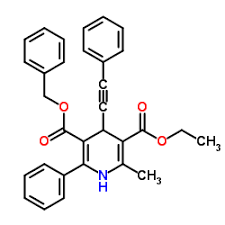The world of microorganisms is a hidden treasure trove of powerful enzymes, like Microbial α and β amylase, that are revolutionizing various industries. These enzymes, produced by bacteria, fungi, and yeasts, are crucial for breaking down complex carbohydrates, particularly starch, into simpler sugars.
Table of Contents
α-Amylase: The Starch Degrader

α-Amylase, a hydrolytic enzyme, is nature’s master of starch degradation. It targets the α-1,4 glycosidic bonds within starch molecules, breaking them down into shorter chains of glucose, known as dextrins. This process is essential for various industries, including
Food Industry: α-amylase plays a vital role in breadmaking, increasing dough volume and improving its texture. It also enhances the sweetness of corn syrup and improves the digestibility of starchy foods.
Textile Industry: α-amylase is used in textile processing to remove starch from fabrics, making them smoother and easier to dye.
Biofuel Production: α-amylase is employed in the production of ethanol from starch-based feedstocks, contributing to a sustainable energy future.
β-Amylase: The Sweetener
β-Amylase, another starch-degrading enzyme, works by attacking the α-1,4 glycosidic bonds at the non-reducing ends of starch chains. It releases maltose, a disaccharide composed of two glucose units, a key ingredient in many industrial processes.

Food Industry
β-amylase is essential in brewing, where it converts starch into maltose, the sugar that yeasts ferment into alcohol. It also contributes to the production of sweeteners like high-fructose corn syrup.
Pharmaceutical Industry
β-amylase is used in the production of dextrins, which have various applications in pharmaceuticals, such as binding agents in tablets.
Production of Microbial α and β Amylases: Harnessing Microbial Power
The production of microbial α and β amylases relies on the ability of microorganisms to synthesize these enzymes. The process typically involves:
Strain Selection: Identifying and selecting the most efficient microorganism for enzyme production. Factors considered include enzyme yield, stability, and cost-effectiveness of the production process.
Cultivation: Growing the selected microorganism in large-scale fermenters under controlled conditions. This includes optimizing nutrient availability, pH, temperature, and oxygen levels.
Downstream Processing: Separating and purifying the produced enzyme from the fermentation broth. This involves steps like filtration, centrifugation, and chromatography to obtain a high-quality enzyme product.
Industrial Applications of Microbial α and β Amylases: A Wide Spectrum of Uses
The industrial applications of α and β amylases are vast and continue to grow. Their ability to break down starch into simpler sugars opens up possibilities in diverse fields, including:
Food Industry: Amylases are widely used in the production of bread, beer, sweeteners, and various processed foods. They enhance texture, improve digestibility, and increase the shelf life of products.
Textile Industry: Amylases are used for desizing fabrics, removing starch used in the weaving process to improve fabric quality and allow for better dye penetration.
Paper Industry: Amylases are employed for sizing paper, controlling its smoothness and absorption properties.
Biofuel Industry: Amylases are vital for converting starch into sugars, which can then be fermented into bioethanol, a renewable fuel source.
Pharmaceutical Industry: Amylases are used in the production of various pharmaceutical products, including dextrins used as binders and disintegrants in tablets.
The Future of Microbial α and β Amylases: A Bright Horizon
The demand for microbial α and β amylases is expected to continue growing in the coming years. Ongoing research focuses on:
Improved Enzyme Production: Scientists are working to develop strains of microorganisms that produce higher yields of enzymes, requiring less energy and resources.
Enzyme Engineering: Modifying enzyme properties through genetic engineering to optimize their activity, stability, and specificity for specific industrial processes.
New Applications: Exploring novel applications for amylase enzymes in areas like bioremediation, bioplastics production, and the development of biocatalysts for sustainable chemical processes.
Conclusion: Microbial Amylases – A Key to Progress
Microbial α and β amylases are powerful tools with applications spanning numerous industries. Their ability to break down starch into simpler sugars makes them crucial for food production, textile processing, biofuel production, and more. As research and development continue, the role of these microbial enzymes in shaping a more sustainable and efficient future is set to grow even stronger.
Frequently Asked Questions(FAQ)
What is α-Amylase?
α-Amylase, a hydrolytic enzyme, is nature’s master of starch degradation. It targets the α-1,4 glycosidic bonds within starch molecules, breaking them down into shorter chains of glucose, known as dextrins.
What is β-Amylase?
β-Amylase, another starch-degrading enzyme, works by attacking the α-1,4 glycosidic bonds at the non-reducing ends of starch chains.
Related Articles

